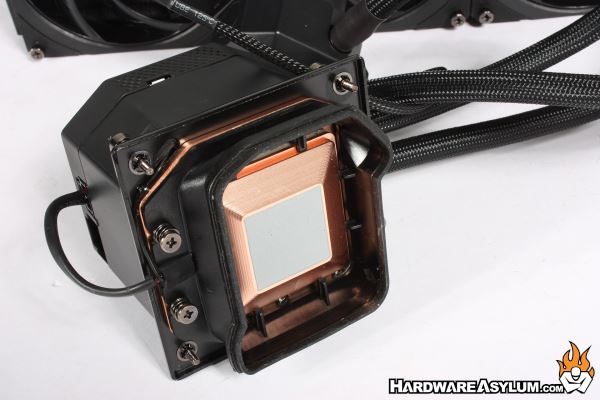Cooler Master MasterLiquid ML360 SubZero Review
Author: Dennis GarciaIntroduction
AIO watercooling is arguably the most popular cooling solution for the modern gaming PC. The system is extremely easy to install and can be very affordable while offering some really good out of box performance. In fact, the only thing better might be a fully custom DIY watercooler allowing you to select any number of components.
While a DIY watercooler can offer better performance there is a golden rule when it comes to watercooling in that you can never go below ambient. But what if you could alter the laws of thermodynamics and cheat the system?
In this review we will be looking at a new collaboration project between Cooler Master and Intel called the MasterLiquid ML360 Sub-Zero. As the same suggests this is a subzero cooler and will allow your CPU to finally run below ambient while still being cooled by an AIO watercooler.

Depending on how far back you look there have been several solutions for controlling heat in a modern PC system. One of the most popular is watercooling and it had a cult following with enthusiasts as a great way to improve overclocks while keeping their components cool. Of course, there were extreme cooling solutions like a Single Stage Phase cooler, Dry Ice or LN2 but these has some practical drawbacks including, noise, cost and longevity.
One extreme cooling method that looked very promising was thermoelectric cooling. TEC or peltier coolers used electricity to provide a cooling option that was limited only by how fast you could remove the heat and how much power you could provide to the cooler. On paper it looked great but in practice they often required secondary Power supplies to drive them. Keep in mind at the time the largest PSU you could by was 500w so you can easily see the concern.
The other major concern with TEC chilling was how to control the cooler. By default, the TEC was either on or off and could easily get cold enough to develop condensation which isn’t good for unprotected electronics. Because of this the method fell out of favor but was not completely dead.
CoolIT used TECs to promote their Eliminator line of AIO watercoolers and used TECs to help cool the radiator. Cooler Master offered a TEC with their V10 tower cooler and allowed a couple of heatpipes to drop below ambient to pull more heat from the CPU. Corsair also offered a TEC cooled waterblock for their Dominator line of memory, this cooler was one of the first to offer a humidly sensor that would control the TEC and prevent it from generating condensation.

